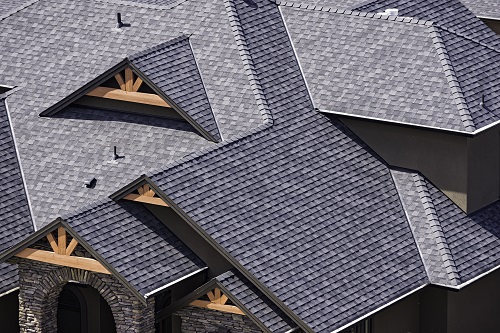
To ensure your family’s safety from drafts and harsh weather conditions, your roofing system deserves the best material. Any crack, hole, or damage in your roof can run into major problems. Hence, you need to choose a high-quality material from the start, one that can withstand strong winds, snow, and the sun’s ultraviolet (UV) rays. In this article, you’ll learn how to choose the right roofing material for your home, which may serve as your reference.
- Deal With A Trusted Roofer
It’s important to only deal with a reputable roofing company that can provide you with the best roofing materials for your home. This is because you can vouch for the quality of products and services of a trusted roofer versus one with suspicious credentials. A good roofing company can also help you choose the best roofing material for your house, which depends on the type of climate and other environmental conditions your local area will experience all year round.
Here’s how you can find a trusted roofer who can help you determine the right roofing material for your home:
- Make sure the roofer has a physical address: You should only deal with a roofing company with a physical address. This is a crucial indication that you’re dealing with a legitimate company.
- Check the roofing company’s website: By checking their website, you’ll be able to know more about the services and products of prospective roofing companies on your shortlist.
- Verify credentials: Ask for the licensing and business permit of the roofing company. Then, verify them with your local or municipal licensing business division.

- Consider Your Climate
As mentioned, when choosing a roofing material, you should consider the climate in your area. Slate roofing is both aesthetically pleasing and durable, as well as suitable for extreme temperatures. Also, this roofing material is perfect for cold climates because it’s able to withstand strong wind, fire, storms, and hail. A metal roof can also resist cold weather damage, gradually shedding ice and snow.
In hot climates, roofs bear the sun’s ultraviolet rays all day long. A poor-quality roofing system degrades in the heat, which breaks down over time, transferring heat from the sun through the roof’s surface into your home. This process increases energy costs from cooling, which makes certain roofing materials less energy-efficient than others.
Here are some recommended roofing materials for hot climates:
- Ceramic roofs and terra-cotta tiles: The Italian term terra-cotta means ‘cooked earth,’ giving these tiles weather-resistant properties. The curved shape tiles also allow air to circulate below the surface, keeping interiors cooler.
- Slab roofs and concrete tiles: A concrete roof is a great option because it possesses terra-cotta’s thermal properties without the hefty price. This material is thick so it can withstand the sun’s heat longer. This means that it takes longer for your home to absorb heat, making your roof weather-resistant.
- Metal roofs: Steel, copper, and aluminum roofing products are environmentally friendly and energy-efficient. Energy-efficient aluminum roofing includes an airspace, which is the space between the decking and the metal panels. This serves as a thermal barrier. This barrier blocks heat transference from your roof to your home interior.
- Asphalt roof: Asphalt shingles roofing is a popular roofing material in warmer climates and it’s also cost-effective.
- Consider Your Budget
You only want the best roofing material to safeguard your home from danger. However, if you’re on a tight budget, you need to work double-time to find where you can buy good-quality roofing materials at a price you can pay.
Check the following tips to find and choose the best roofing material for your home:
- Check the insurance coverage: If you’re replacing a damaged roof due to natural disasters, check your homeowners’ insurance coverage. In general, homeowners’ insurance policies don’t cover repairs or replacing a deteriorating roof due to neglect or wear-and-tear.
- Know the best time to buy roofing materials: To take advantage of lower prices of roofing material or off-season discounts, you can schedule roof replacement and repair in late winter (January to May) or spring. In addition, new shingles should undergo thermal sealing, which normally takes several days or weeks at 40 degrees Fahrenheit or even higher, making winter a good time to replace your roof.
Conclusion
Choosing the right material for your roof takes into account your needs and your budget. You should choose a roof that can withstand your area’s climatic conditions.
Remember that you should always prioritize your family’s safety above anything else. That’s why it’s crucial to deal with a trusted roof supplier. Having a reliable supplier will allow you to rest assured that you get good-quality roofing materials at a price that won’t be hard on your pocket.












